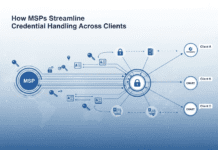Compliance regulation is an essential issue for organizations. A compliance training program can make or break an organization, and adding a Learning Management System (LMS) can increase its effectiveness by around 10 times. In this post, we look at how an LMS can help you with such training so employees know what is expected of them and comply with the necessary guidelines.
Single-Source: Training Management
An LMS consolidates all training activities onto its platform. It enables administrators to organize courses efficiently, track attendance, generate quizzes and exams, and monitor progress. Having everything centralized simplifies the management of the compliance training platform, making it easier to monitor and organize.
Consistency in Providing Content
Consistency in communication is key to compliance, as all employees need to receive the same message. With an LMS, there is consistency in content deployment. Standardized materials ensure all members receive the exact instructions and guidelines, minimizing the chances of misinterpretation or inconsistency.
Accessibility and Flexibility
Accessibility is just one of many reasons why LMSs are advantageous. Training materials are more accessible to employees anywhere, anytime. This allows learners to consume the content at their own pace, according to different learning styles and timetables. It also enables remote employees to receive the same training as those working within the office.
Tracking and Reporting Automation
Tracking the completion rate and training progress is also essential for compliance. Each learner’s documented activity is automatically stored in an LMS that generates extensive reports identifying who completed the required training. Not only can these reports be vital in an audit, but they can also serve as evidence that the organization is adhering to its regulatory requirements.
Continuous Updates and Modifications
Regulatory changes are frequent, and thus, frequent updates to your training material are required. With an LMS, you can quickly and easily revise content so employees can access the most up-to-date information. This feature allows organizations to stay current with constantly changing standards and avoid outdated practices.
Learner-Engaging Experience
An LMS allows the use of different media, engaging the learning process. Adding interactivity to compliance training through quizzes, videos, and simulations can also enhance and liven the experience. By capturing the learners’ interest, these tools help boost retention and comprehension of the content.
Flexibility and Scalability
Organizational training needs tend to grow as the organization grows. Since an LMS can scale its solution to include more courses and learners, it is the ideal solution for compliance training. The system is still effective at any scale, and the above operational dimensions ensure that.
Cost-Effectiveness
Nevertheless, traditional training methods are costly. An LMS saves money by reducing the use of physical materials and workshops. Compliance training becomes cost-effective as digital content can be reused and updated without significant cost.
Tailoring the Newsfeed to Suit You
Different organizations have different compliance needs. An LMS enables you to create training tailored to your specific needs. Content can be customized to target particular regulations and industry standards so administrators can ensure relevant and valuable training.
Improved Record Keeping
It is essential in terms of compliance to keep your records straight. An LMS provides a permanent home for all things training, so keeping track of information is simple! Such records are essential when performing an audit, as they offer the ideal evidence that the organization has done its part towards meeting its training requirements.
Feedback and Improvement Loop
However, it is essential to remember that feedback is critical to improving training programs. You can also use an LMS to conduct surveys and assessments so participants can share their experiences. This kind of feedback allows administrators to recognize what is lacking or needs improvement so that the training stays relevant and valuable.
To Sum Up
A compliance training program requires a key element: an LMS. It improves training efforts by embodying a centralized training method, ensuring consistency with ease and flexibility, and eliminating confusion and unnecessary complications. Hence, when compliance becomes essential, relying on automation becomes necessary, so LMS is no longer a choice. An LMS is a great asset for organizations looking to adhere to regulatory requirements with automation in processes, content updates, and learner engagement.





